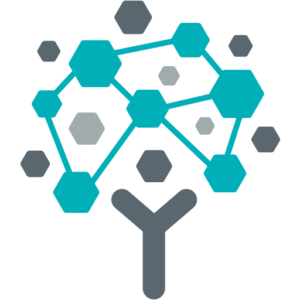Fund Accounting Solution, Nonprofit Accounting
Buckets of Saving for Buying a Nonprofit Accounting Solution

Reading Time: 8 minutes
Among the nonprofit professionals we surveyed, almost half use six digital tools to perform their duties. As many as 23% rely on eight digital tools. However, reduced efficiency results from this complex digital infrastructure, and 78% of nonprofit professionals report spending about a quarter of the workday juggling between several systems.
Fortunately, you can increase efficiency and enable your organization to accomplish more with less by investing in a multi-faceted system. In 2022, many nonprofits plan to invest in a cloud-based computing system. If you want to make this investment, there are a few savings buckets to consider when buying an accounting solution for your nonprofit.
Annual Saving for Process Improvement
If you’re a nonprofit CFO, finance manager or accounting manager, you may be struggling with overworked teams, lack of time, and inefficient workflows and processes, yet you face the same pressure to deliver reports and maintain fiscal responsibility. You may also want to apply for grants or need to manage multiple grants simultaneously. If you use a starter small business accounting platform like QuickBooks and do some tasks manually, like creating budgets, doing payroll, and tracking grants, you could be dealing with an inefficient process.
Annual saving for process improvement enhances your efficiency so you can use your time more effectively in mission-building activities. The following are some ways you can save each year with process improvement.
1. Simplify Data Entry and Reduce Errors
Your nonprofit organization can benefit from a system that can handle automated:
- Interfund entries
- Off-set accounts
- Distribution codes
- Memorized transactions
When your fund accounting system automates data entry, you can eliminate potential human error and increase team efficiency. Elements like Bank Feed in MIP Cloud allow for effortless account reconciliation. You can also reduce duplicate data entry and errors by automatically importing data from third-party apps. Additionally, MIP® has an import and export mechanism, which is not a feature in other software like QuickBooks.
2. Implement Automatic Bank Reconciliation
Using our automated bank reconciliation function, you can gain savings by downloading transactions from the bank and then having MIP® automatically match your transactions. Say goodbye to manually going through every transaction and matching them to what is in your system. With this function, you can skip manually reconciling your bank transactions. Our solution matches your transactions and displays anomalies for you to address in the module, saving you administrative time.
For your nonprofit organization, bank reconciliation is essential for fraud prevention, asset protection, and compliance. Fortunately, you can reduce the chance of errors by ensuring every transaction receives an appropriate review. Rather than spend countless hours logging transactions across spreadsheets and databases, you can automate the entire process to eliminate wasted time. As the administrator, you can configure who can view bank reconciliation records, connect financial institutions, and access a log of the users who have accessed the module and when.
MIP Accounting® makes it easy to do bank reconciliation activities regularly so tasks don’t pile up. In some cases, it can work best to do bank reconciliation quickly at the end of the day.
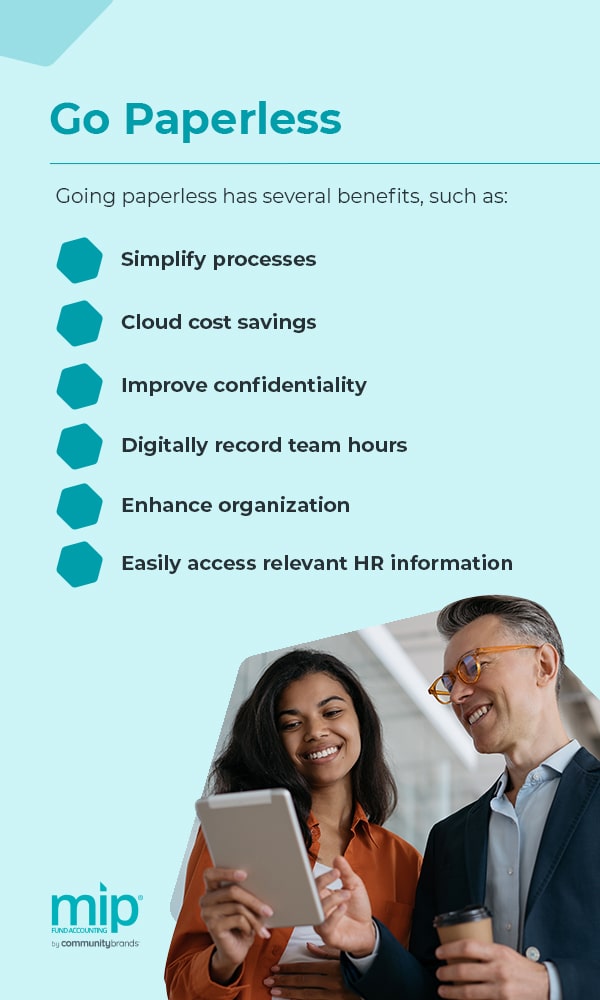
3. Go Paperless
With our fully integrated MIP® module known as Microix™ Workflow Solutions, you can go paperless in your organization and make your nonprofit more sustainable. Going paperless has several benefits, such as:
- Simplify processes: With a paperless system, you can easily drill down and look at an invoice with a few clicks. This system helps you streamline your purchasing, requisition, inventory, timesheet, budgeting, and payday processes, allowing employees to view their checks right away instead of waiting for deposits to clear at their banks. When each process is simplified, you can also reduce your manual processing time.
- Cloud cost savings: By going paperless and choosing a cloud-based platform, you can also enjoy related savings. You will not have to pay for hardware, software, or labor to maintain an on-premises system. You will have lower security costs, and you can reduce administrative costs, such as the cost of purchasing paper products like checks and envelopes with an Electronic Funds Transfer (EFT).
- Improve confidentiality: When your data lives digitally, you don’t need to print out your fiscal information, which can keep your sensitive data more secure.
- Digitally record team hours: A paperless system also allows you to digitally record employee hours, timesheets, and information.
- Enhance organization: Remove the need for physical records and files with a paperless system to eliminate disorganization. Electronic records are easy to search and find, allowing you to print them right when they’re needed.
- Easily access relevant HR information: With a paperless system, you and your employees can easily access relevant HR information, such as pay stubs, virtual timesheets, W-2 forms, benefits, and vacation time. Your employees can feel a greater sense of control and involvement in the payroll process since they can quickly answer questions related to payroll. A reliable system consistently pays your employees on time and gives them access to HR details, so they may feel greater security in their employment.
When you go paperless, you can improve your organization’s processes and sustainability.
4. Automate Purchasing and AP Approval Process
You can automate accounts payable and purchasing approval process with our purchasing modules. This module is integrated seamlessly with accounts receiving and payable and offers robust reporting and easy purchase order entry.
- Encumbrances: You can easily reserve funds for planned commitments or expenditures and improve your compliance and tracking for reporting. Include encumbrances in the budget checking tools and financial reports to measure accurate budget performance.
- Fixed assets: In the general ledger, you can calculate depreciation, track assets, and generate disposal and depreciation entries automatically. Use Quick Asset Entry to enter new assets quickly when recording cash disbursements, purchase orders, or accounts payable.
- Electronic requisitions: With electronic requisitions, you can increase the availability of information for your pre-purchase decision-making process. Use our one-click budget checking tool to review the impact of your current requests. When a requisition request’s status changes, you will get a notification via email. You can also conveniently reject or approve requisitions from a mobile device like an Android device or iPhone.
5. Avoid Data Loss
A nonprofit accounting solution can help your organization prevent data loss. Downtime is often the cause of data loss, which is why a disaster recovery plan is essential. Causes of downtime may include:
- Accidents
- Cyberattacks
- Power outages
- System failures
- Natural disasters
- Software updates
During a period of downtime, your nonprofit’s data could be inaccessible. During a cyberattack, an unauthorized party may even hold your organization’s data hostage. This is where cloud-based software comes in. The right cloud provider offers regular data backups, routine software updates, and data encryption. Regular updates, for example, keep your nonprofit safe from cyberattacks and get your organization ahead of malware.
If something happens with your data due to human error, a cloud disaster recovery plan can ensure your data is quickly restored. Since cloud systems prevent downtime and data loss, your organization can become more efficient. Cloud disaster recovery plans are scalable, compliant, and offer a great return on investment (ROI).
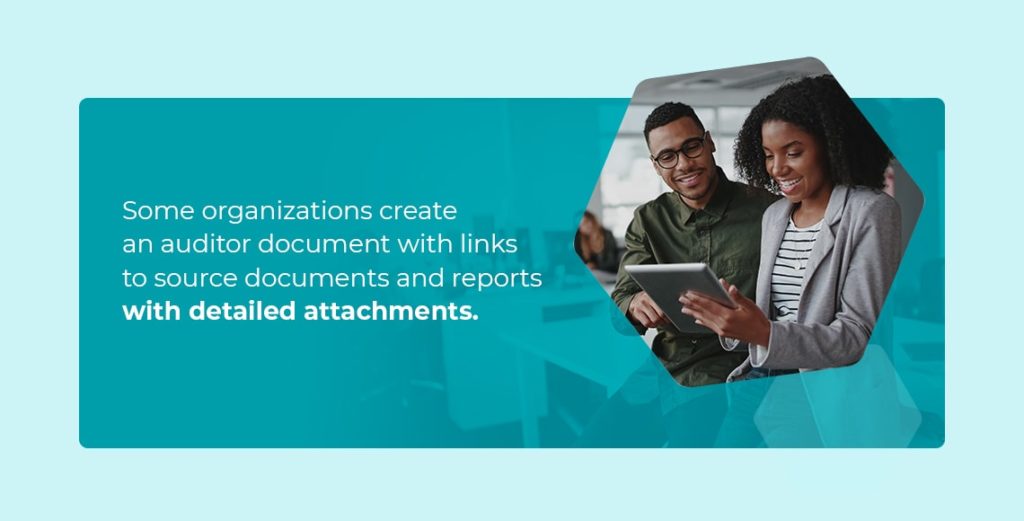
6. Save Time on Audit Preparation
Preparing for an audit can require your organization’s full attention and last all year. Even when you are not legally required to conduct an audit, your nonprofit could find doing so beneficial. Audits can demonstrate that your organization successfully uses your grants, give executives and board members accurate financial data, and reassure supporters that your organization efficiently manages operations.
To prepare for an audit, you need to continue operating as normal and choose an auditor. Get a list from your auditor of the reports they want, and have those reports ready to go. Some organizations create an auditor document with links to source documents and reports with detailed attachments. For something like this, we recommend giving your auditor access to your accounting software.
MIP Accounting® can offer a comprehensive view of your organization’s finances. Features that can help you save time on audit preparation include:
- System audit trail
- Transaction reports
- Strong internal controls
- Robust security controls
- Advanced security module
- Summary organization audit
- Fully auditable general ledger
This can also mean you can reduce annual audit fees. With your accounting data in a cloud environment, the auditor doesn’t have to go through all the paperwork, doesn’t need to physically come to your location, and can access your information virtually, so having this ability may reduce your audit fees. Top accounting platforms also offer licenses for auditor or executive view only.
7. Automate Complex Allocations
Many organizations do complex allocations in a spreadsheet manually, which can make consistently allocating expenses and revenue difficult. This is especially true when allocations occur on a “look-back” basis rather than during the transaction entry. Manual allocations can be a laborious, time-consuming process, which is why many nonprofits are switching to accounting software that automates complex allocations.
Using the allocations module from MIP® can help your organization more easily manage multiple funds. If your organization receives revenue and incurs indirect costs that need to be allocated across several accounts, you need the MIP Allocations Management modules. Benefits of these modules include:
- Easily perform complicated allocations: Perform your organization’s complex allocations with a single mouse click while maintaining consistency and accuracy.
- Make the allocation process easier: Flexible reporting allows you to view the impact of your allocations before accepting them into your General Ledger. This makes the allocation process easier, allowing nonprofits to track allocations and ensure they’re properly accounting for these assets.
- Save time: Your nonprofit can save time by eliminating manual processes and running more efficiently.
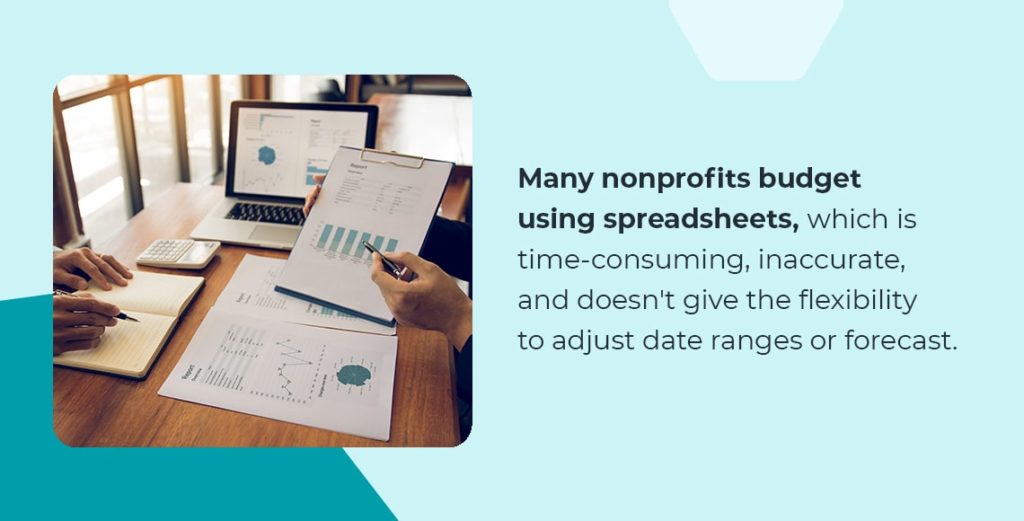
8. Improve the Budget Creation Process
Many nonprofits budget using spreadsheets, which is time-consuming, inaccurate, and doesn’t give the flexibility to adjust date ranges or forecast. Budgeting is essential for tax reporting, planning for the fiscal year-end, and preparing for next year’s financial plan. Budget reporting gives you insights into your organization, the ability to reflect on your year, and the opportunity to compare your financials year-to-year.
The budget creation process can help you identify potential areas for growth and places where you can reallocate resources. If your organization relies on a manual budget creation process, we recommend using our integrated budget module for nonprofit budget optimization.
Our module can help your organization manage financials and account for unexpected changes. With integrated, powerful functionality, you can compare budget to actual across your organization and for each grant, program, or department. You can also use Executive View to improve efficiency by moving the budget creation process to those responsible for them.
9. Spend Less Time Creating and Running Reports
When reporting requirements call for your financial data, your nonprofit needs an efficient way to maintain balanced books. You may need to comply with FASB and GASB and report on individual funds from several sources. Nonprofit reporting automation with MIP® allows you to spend less time creating and running reports. MIP® has an easy-to-use report writer, flexible chart of accounts, and budgets that your organization can use.
A critical part of your nonprofit accounting system is your chart of accounts. Chart of accounts includes:
- Assets
- Revenue
- Expenses
- Liabilities
- Net assets
- Fund balances
With a detailed and segmented chart of accounts, you can analyze your business better than ever before. Annualize your operating budget, and gain flexibility in managing and reporting on data with a flexible chart of accounts.
10. Manage Grants
Grant management refers to all the methods and processes your nonprofit uses to fulfill grant requirements. For many nonprofits, grants are a crucial source of revenue. Though they are essential for your mission, they can bring a high burden of accountability and monitoring. The MIP Grants Administration Module allows you to define your customer segments to track your grants and enhance your organization’s grant-seeking life cycle.
With this module, you can manage several grantor relationships, track them with a chart of accounts, and run reports that maximize your grant management program and lead to successful outcomes.
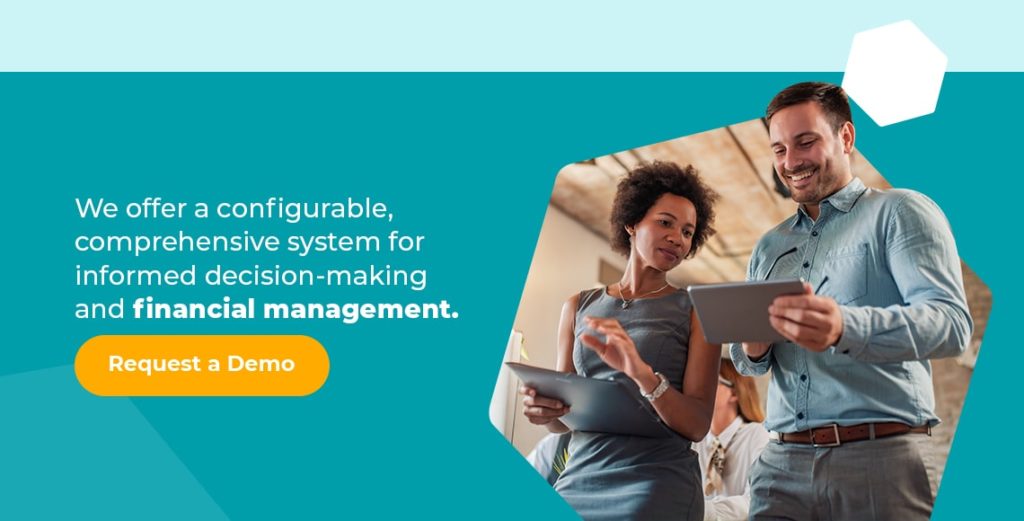
Request a Demo of MIP Accounting®
While process improvements are where you’ll see the greatest ROI, you can estimate the overall cost savings that will contribute to your bottom line and savings on your overall operating budget. At MIP®, we want to help your organization become as efficient as possible so you work smarter, not harder.
We offer a configurable, comprehensive system for informed decision-making and financial management. We designed our solution for the nonprofit sector and government entities so you can operate more efficiently and better engage with donors. This system is scalable, secure and flexible, offering your nonprofit everything you need for fund accounting. Our software anticipates your accountability and reporting requirements, and our flexible chart of accounts can report and record multiple funding sources.
If you want to implement the nation’s leading cloud-based fund accounting solution in your nonprofit organization, request a demo of MIP Accounting® today.
Share this post
